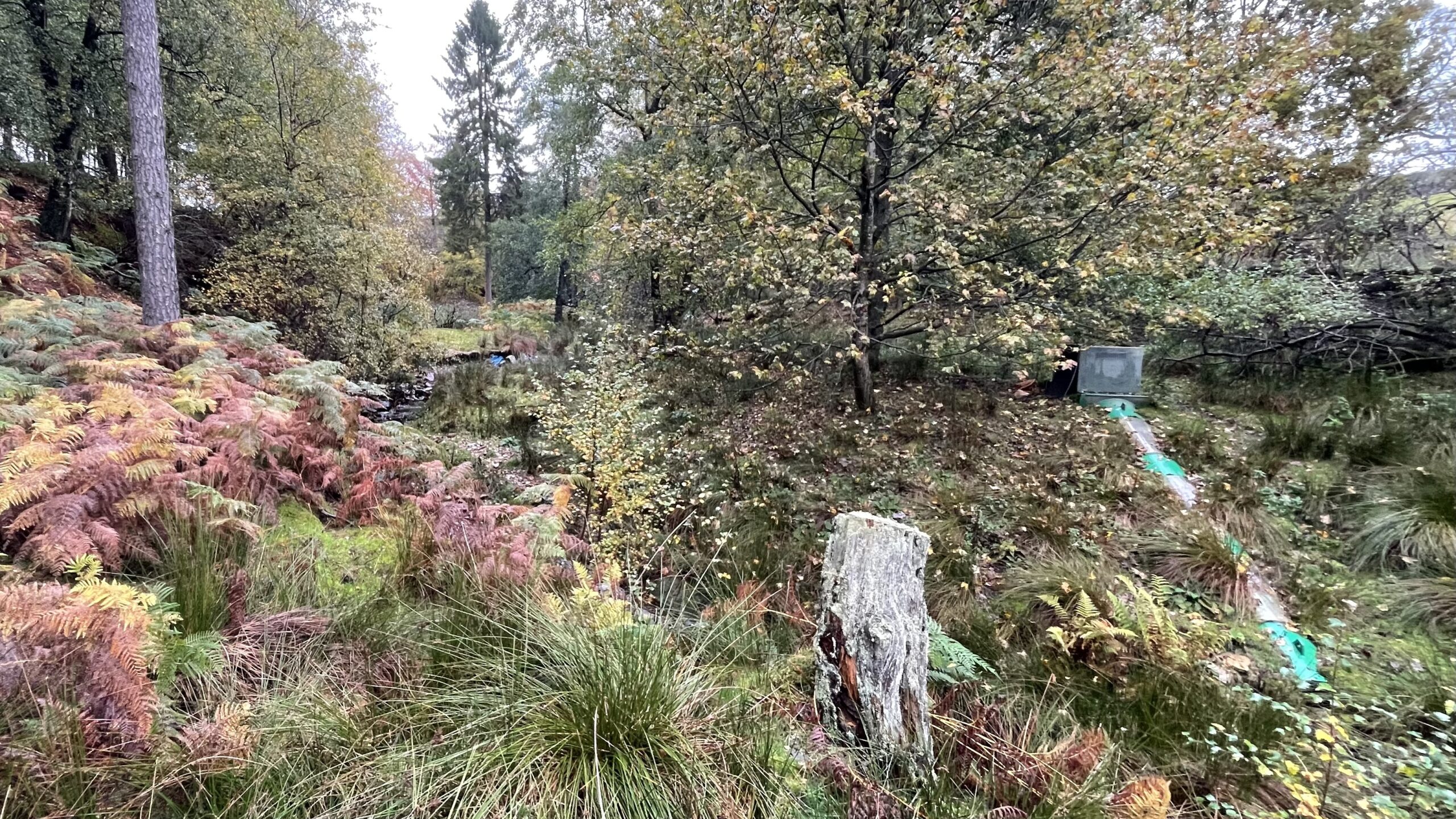An Archimedes Screw, housed in a green and white casing, tames the restless waters of Bonfield Gill. The view looks upstream, where the beck threads through a small patch of woodland dominated by birch. Autumn has arrived with its full painter’s palette: russet bracken, lush green grasses, and a mossy tree stump that seems to have been there since the Flood. The Screw quietly generates electricity for Bonfield Ghyll Farm, a marriage of old landscape and new ingenuity.
As recently as 1958, the Ordnance Survey recorded the farm as Bonfield Gill. The modern rendering, Bonfield Ghyll, is rather more poetic, or at least tries to be.
The word ‘gill’, from the Old Norse gil, once meant a narrow ravine or cleft. The alternative spelling ‘ghyll’ seems to have emerged with Wordsworth, who, in 1793, polished it for his poem An Evening Walk:
“Then, while I wandered where the huddling rill
Brightens with water-breaks the hollow ghyll
As by enchantment, an obscure retreat
Opened at once, and stayed my devious feet.”
Wordsworth’s affected flourish took root, and ever since, the ‘ghyll’ spelling has been favoured by those seeking a whiff of antique charm—hotels, beauty spots and, apparently, the occasional farm1Tyler, Dominic. Uncommon Ground: A word-lover’s guide to the British landscape. Page 99. Guardian Books. 2015..
On the North York Moors, precision persists: a beck runs through a gill, but a gill does not run through a beck. A dry gill remains a gill; a dry beck is nothing but memory. As an example, on modern maps, Waterfall Gill near Slapewath is labelled in black, while Waterfall Beck appears beside it in blue, a cartographic nod to the distinction2NZ 63314 16913 https://explore.osmaps.com/pin?pinCoordinates=54.543894922032166,-1.0232958420107252.
‘Beck’ too is of Old Norse origin, sharing ancestry with the German bach, meaning ‘brook’ or ‘stream’. The two words, beck and gill, have drifted together over time through easy use, misuse and muddle.
Wordsworth’s ‘rill’, incidentally, is yet another cousin—a mere trickle, more fleeting than a beck, a stream so modest it might vanish between one rainfall and the next.
- 1Tyler, Dominic. Uncommon Ground: A word-lover’s guide to the British landscape. Page 99. Guardian Books. 2015.
- 2

Leave a Reply